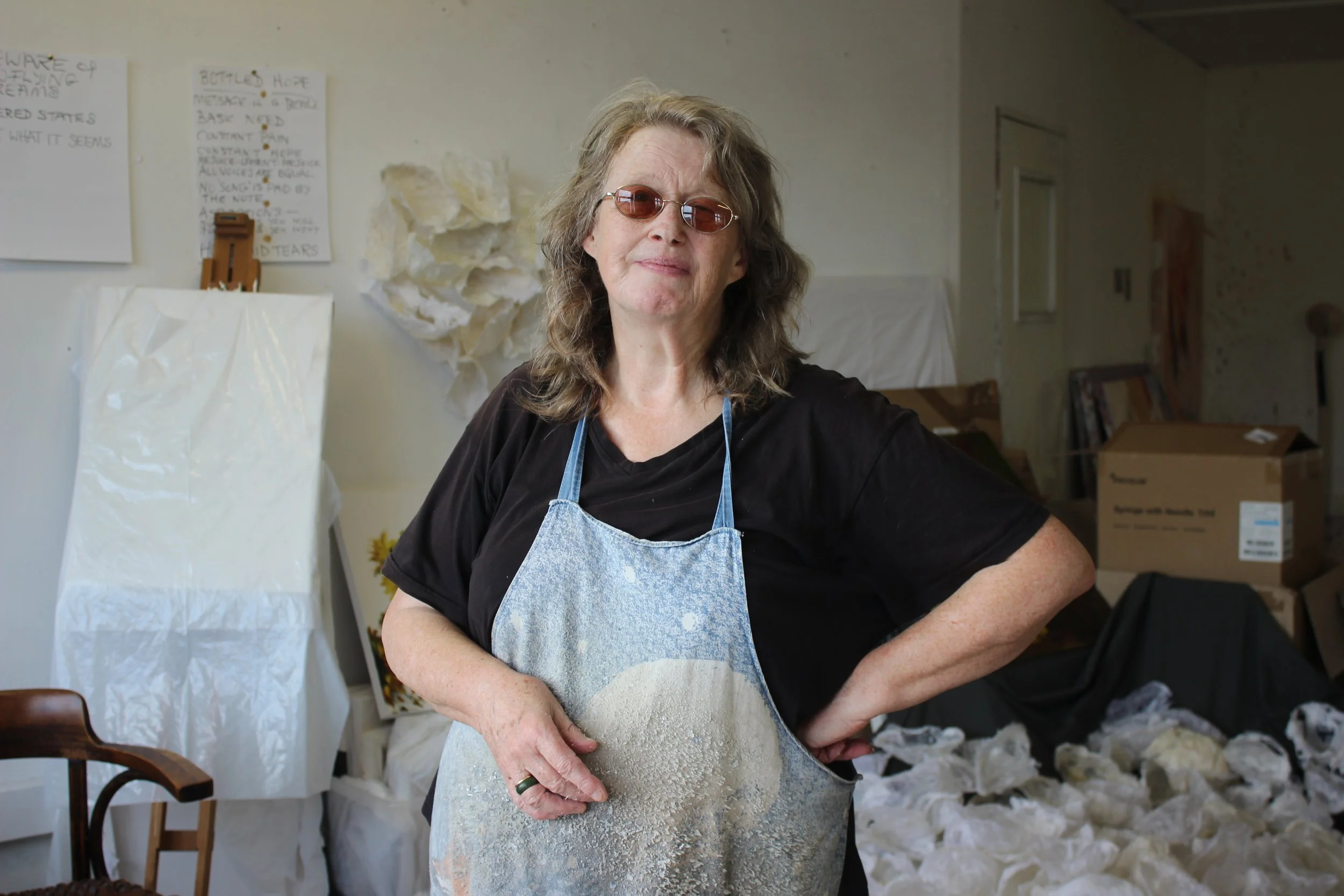Cath Acons is a multimedia visual artist predominantly working with sculptural installation.
In the 1980s and 1990s Cath’s work gained notoriety for it’s feminist themes and was exhibited frequently alongside peers including Helen Chadwick, Joanna Mowbray, and Lois Williams. She has also exhibited in notable galleries including Graves Gallery, Mappin Gallery, and Manchester’s Cornerhouse Gallery.
In 1998 Cath made the difficult decision to step back from her arts career to care for a struggling family member. Although Cath was only able to find brief moments to create art (in her shed or at her kitchen table) she continued to plan and curate work in her mind.
‘I never stopped making art in these 'missing' twenty or so years, always carrying a sketch book and later turning to painting… as my therapy I suppose.’
A change came in 2020 when Cath became a studio holder at Yorkshire Artspace - marking a bold return to her creative practice.
Cath’s current body of work stays true to her roots as an installation artist who focuses on unconventional materials. She gravitates towards paper, glass, bread, clothing, and litter as a vehicle to question the nature of what a sculptures media should be. Cath works with personal narratives, imbuing her work with themes of motherhood, loss, religion, resilience, and the processing of trauma.
‘My work is about responding to external pressures whilst still trying to contain myself in a still pool.’
Cath lives with visual impairment as a result of Bell’s palsy which has helped her to understand artwork in a different way, and she now considers accessibility a key part of her work. Cath now makes work that is to be touched, picked up and felt, and has begun to incorporate sound installation into more recent pieces.
Cath also produces paintings and studies (sometimes under the moniker Cath Acorns) that feed into to her sculptural work - acting as a representational anchor that steadies and grounds her conceptual thinking. These works are reflections of the environment around her and often take the form of landscape and floral studies.
